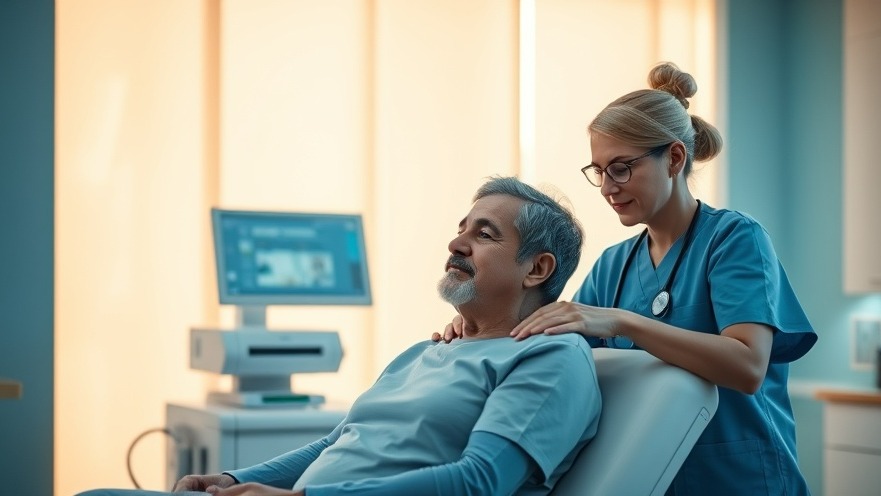
Understanding the Power of NMES
Navigating through the latest advancements in neuromuscular electrical stimulation (NMES), one can't ignore its potential impact on patient care. As Robin Juthberg, a Ph.D. student at the Karolinska Institutet, prepares to defend his thesis titled "Advancing neuromuscular electrical stimulation optimizing comfort and hemodynamic efficiency," he highlights the significance of optimizing NMES for better patient outcomes.
Innovation at the Cutting Edge of Healthcare
At the core of Juthberg's research is the application of NMES via specific motor points. This targeted approach not only improves comfort but is particularly attractive for patients who may be hesitant due to fear of pain during standard electrical stimulation treatments. The findings suggest that even minimal visible movements, such as ankle flexion, can be significantly enhanced through the right application of NMES, expanding its accessibility.
Beyond Just Muscle Stimulation: A Health Perspective
NMES has multifaceted benefits, one of the most compelling being its potential to reduce the risk of venous blood clots. By enhancing blood circulation with minimal discomfort, NMES can facilitate better health outcomes for patients who require long-term movement therapies, especially the elderly and individuals recovering from surgeries.
Research Findings That Matter
Juthberg’s thesis reveals that by applying NMES at lower frequencies and with localized pressure on stimulation electrodes, patients experience less pain. This excitement around NMES is not just academic; it provides practical insights that can be implemented in clinics today. Addressing patient comfort must be a priority, encouraging adherence to therapy, which can lead to improved treatment efficacy.
Rethinking Patient Engagement and Compliance
The results have implications beyond technical enhancements in NMES technology. For concierge health practitioners, integrating these insights into practice can create a more patient-centered approach, fostering greater compliance with therapeutic regimens. When patients perceive treatments to be less painful and effective, their engagement naturally increases, producing better health outcomes.
Future Implications for NMES in Clinical Settings
As healthcare continuously evolves, upcoming technologies around NMES could further integrate patient comfort with technological advancements. The research points towards a future where NMES can be a staple in rehabilitation centers and therapeutic practices for various patients. By harnessing these findings, practitioners can adapt their methodologies to better suit patient needs, ensuring optimal health results.
Conclusion: Taking Action in Your Practice
For concierge health practitioners keen on remaining at the forefront of medical advancements, understanding the nuances of NMES can offer a unique advantage. By fostering a comprehensive approach that emphasizes patient comfort and adherence, practices can leverage this technology to maximize therapeutic outcomes. Consider integrating NMES protocols that prioritize comfort to see significant benefits in patient satisfaction and treatment success.
 Add Row
Add Row  Add
Add 




Write A Comment